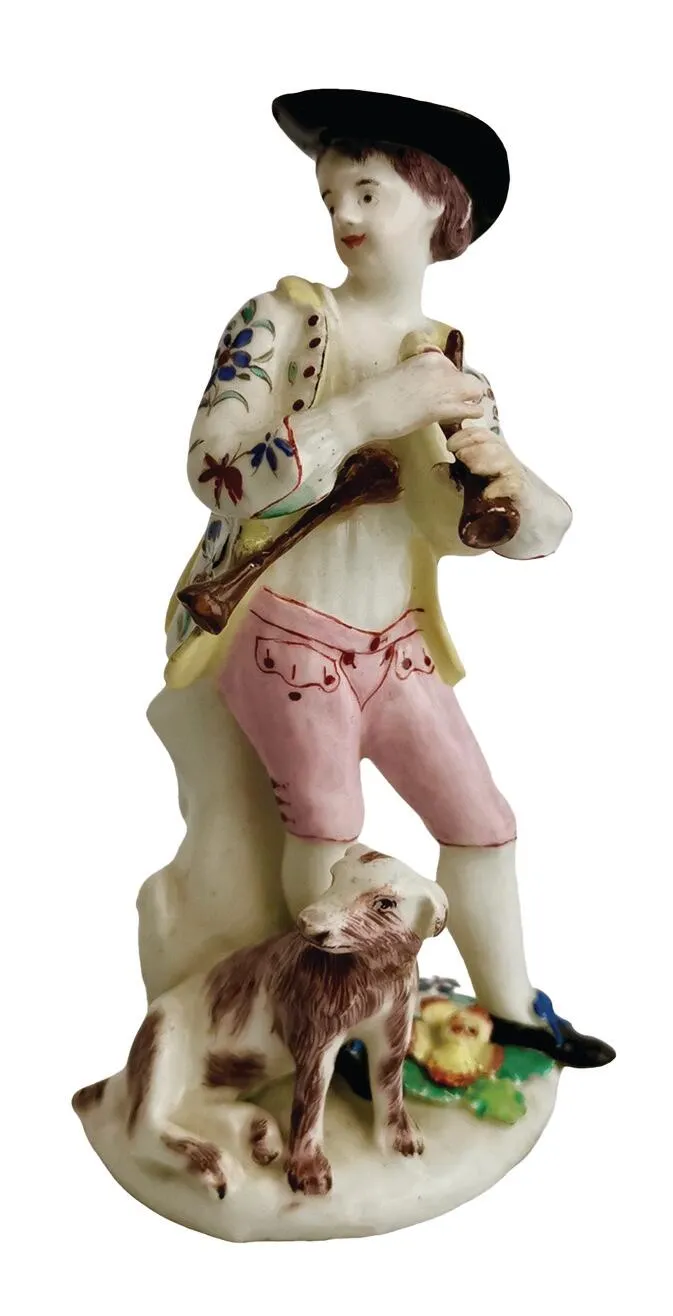A true ‘Cockney’, it is said, is someone who was born within the sound of the bells of St Mary-leBow church in east London. If a factory can be called a Cockney, then the Bow Porcelain Factory certainly was; it was built on the banks of the River Lea, between Bow and Stratford near today’s Olympic Stadium.
The Bow factory is fascinating not only for its beautiful wares, but also for the way it experimented with porcelain, making some important innovations. I am, of course, biased; I am writing this from my stockroom situated just a couple of miles upstream along the same River Lea. If I lean out of my window I can see the site where the Bow factory once stood.
I love the East End for its busy energy of innovation and industry. The landscape has changed but the energy hasn’t: here, people from all corners of the world are busy making things. The driving forces behind the Bow factory were Thomas Frye, a brilliantly talented Irish engraver, and Edward Heylyn, a Bristol clothier. The story goes that they took out a first patent on porcelain in 1744, but that production didn’t really start until 1748.
However, later research suggests that the story is more complicated than that, and it has everything to do with the explosion of innovative experiments that took place in Britain around 1740.

It is likely that Frye and Heylyn were already experimenting with porcelain in the 1730s, resulting in that first patent. This was fine, hard-paste porcelain, equal in quality to the famous German Meissen porcelain.
The French felt alarmed that in England a porcelain had been devised ‘more beautiful than that of Saxony, because of its composition’. The clay, however, was not English; it was so-called ‘Cherokee clay’ or ‘unaker’, imported from North Carolina in America. This early Bow endeavour was still disorganised and today the only trace of it is a group of 38 beautiful items that are called the ‘A-marked group’.
Frye and Heylyn were always experimenting with new recipes, and in 1749 they brought out a new patent of soft-paste porcelain that contained ‘Virgin Earth’. This is a mysterious term that has nothing to do with earth: it was bone ash, or ground-up bones!
Using bone ash was a pragmatic move; there were plenty of slaughter houses with a ready supply in the East End. Bone ash made the porcelain whiter, less breakable and easier to shape. This bone china would later become the standard, first in Britain and then all over the world.
Encouraged by their results, Frye and Heylyn built a modern factory on the banks of the River Lea in 1749. They called it ‘New Canton’, after the 13 factories on the banks of the Pearl River in Guangzhou, where Chinese porcelain was exported to Britain. This name said everything about their ambition: to equal the quality of Chinese porcelain and displace it with homemade British porcelain.
Until its closure in 1776, the Bow factory produced masses of modest porcelain wares for domestic use; anything you could imagine in a middle-class home. Much of this was blue and white, some polychrome. They also produced highly decorative items: bizarre Rococo frill vases, little shepherds with their dogs, Roman mythological figures…

The figures in particular show Bow’s genius, as they have a simple perfection and innocence about them that breathes unpretentious confidence. These are not showy imitations of European masterpieces, but homegrown masterpieces, from the gritty East End no less. There is a wonderful juxtaposition between the fancy Chelsea factory serving the rich and famous, and the gritty Bow factory serving the middle class and bringing about innovations that would change the landscape of British porcelain forever.
Together, they represent the brilliance of British decorative arts of that period: restless tinkering with science that produced new innovations; a rich mix of Brits and immigrants forging new ways of doing things; and an array of styles.
